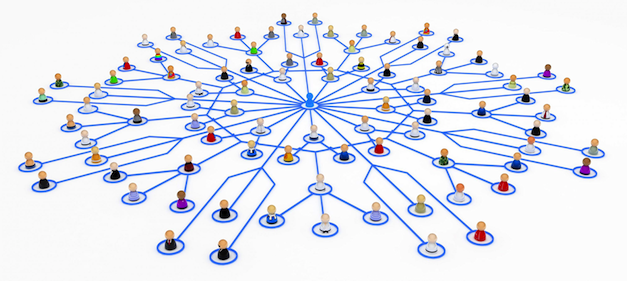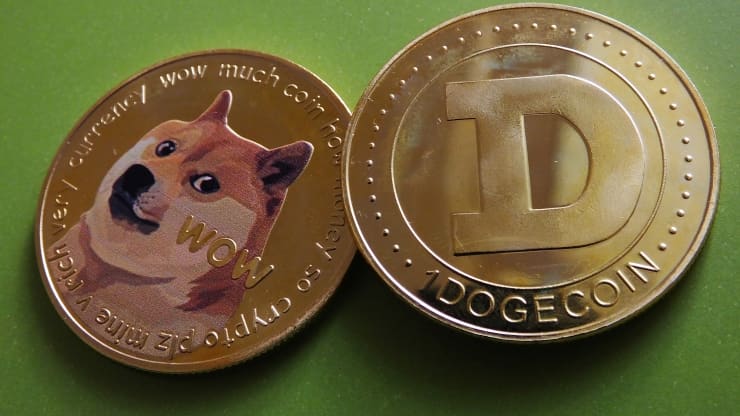- DeFi protocol decouples central governance in the issuance of financial products. DeFi refers to all financial products issued on the blockchain.
- The market for DeFi does not only provide a viable alternative to the banking population but more importantly, could enable access to essential financial services to the 1.7 billion unbanked population.
- Personal loans and peer-to-peer loans are estimated to reach $460 billion by 2022 and DeFi is on track towards becoming a market leader in this space.
DeFi is short for Decentralized Finance. It has become one of the trending topics in blockchain and the financial world at large. DeFi mirrors the functions of traditional financial services but differs in its approach which could be heavily decentralized.
The traditional financial institutions of the world today are entirely centralized both in control and governance. Central authorities issue regular fiat currencies through endless printing of money. This has a major influence on the global economy, largely negative. This is because the power to regulate the flow and supply of these currencies is domiciled within the hands of the government and banks.
With DeFi, Everyone Takes Charge Of Their Financial Products

Decentralized Finance decouples central governance in issuing financial products. DeFi is a collective name for all digital assets, protocols, smart contracts, and decentralized applications (DApps) built on a public blockchain such as Ethereuem. It could also be seen as a suite of all financial products issued on the blockchain that could assume the functions of fiat money.
Blockchain has found increased use cases in the past and even more so in this decade and the financial industry is clearly taking the lead in this disruption. DeFi came into the limelight at a time when the world was seeking an alternative means of financial products void of intense manipulation and central control which breeds a lot of inefficiencies.
Smart contract or DApps platforms like Ethereum blockchain allows developers to deploy digital assets called tokens, digitize a real tangible or intangible asset or automate the functions of various financial services such as lending, etc. Smart Contract is unarguably the brainchild of the DeFi ecosystem as it enforces a trustless, verifiable agreement in a decentralized value system.
The adoption of DeFi has maintained an upward trajectory growth since its inception. In a space of one year, the total value of Ether (ETH) locked in DeFi markets has surged from $317 million to over $1 billion. With this increased growth, the market sentiment is focused towards the penetration of DeFi into the mainstream financial market.
How DeFi Will Disrupt The Existing Traditional Banking System

The global financial system has relied heavily on what could be termed a ‘redundant approach’ in the issuance of financial products. Blockchain as a technology born in the wake of the 2008 financial crisis is on the verge of remodeling modern finance.
“The goal of DeFi is to reconstruct the banking system for the whole world in this open, permissionless way” says Alex Pack, managing partner at Dragonfly Capital, a $100 million crypto fund.
People are largely going to be interested in DeFi because of their libertarian mindset. The traditional banking system places an embargo on how much control people have over their finance, this is changing with DeFi. The financial lending system is taking the lead in the adoption of the DeFi ecosystem.
The traditional lending system instituted by banks comes with a package of backlogs and frustration for borrowers and lenders: ranging from rigorous paperwork, the near-zero interest rate on assets, delays in loan approvals and exorbitant loan processing fees. DeFi bridges these inefficiencies with the aid of a decentralized ecosystem.
By eliminating the need for a third party, DeFi can cut down lending fees, reduce processing time to enhance instant loan issuance with no paperwork or rigorous documentation. The current lending systems rely heavily on trust, DeFi bridges this gap with the aid of a trustless distributed ledger technology.
DeFi does not only provide a viable alternative to the banking population but could also serve the 1.7 billion unbanked population, bringing decentralized banking to their doorstep. DeFi is therefore presenting a strong case against the traditional banking ecosystem.
Some Leading DeFi Projects
The popularity of blockchain lending projects has birthed a wide range of DeFi projects which are now the face of decentralized lending products. Notable mentions are MakerDAO, Celcius Network, Nexo, ETHLend and a wide range of others.
MakerDAO is the most popular DeFi project which deploys a non-custodial, permissionless algorithm for initiating margin calls and provision of margin call liquidity. Celcius and Nexo are also non-custodial with a centralized price feed. Celsius Network has gained increased popularity, reaching 2,165% growth in deposits since it started operation in 2018.
These platforms differ in the manner in which they deliver value to the users. Though no DeFi project is yet completely decentralized in its service delivery, a large portion of the protocols employed are decentralized. For now, the race for a completely decentralized lending ecosystem continues.
How DeFi Could Fare in the Future

Crypto lending is currently witnessing robust growth, MakerDAO’s DAI is the largest lending product with over 60% of the DeFi market share. This accounts for a greater part of the ETH-based decentralized finance. The crypto loan industry currently sits at $4.7 billion, with over 244,000 loans issued so far.
The DeFi market is tiny compared to traditional finance, but it has picked up its pace rapidly since last year. The market for personal loans and peer-to-peer loans has enormous growth potential and is projected to reach a market value of $460 billion by 2022. This presents unending opportunities for DeFi to seize a giant share of the market. As blockchain continues to penetrate mainstream finance, there is room for increased adoption of DeFi.











